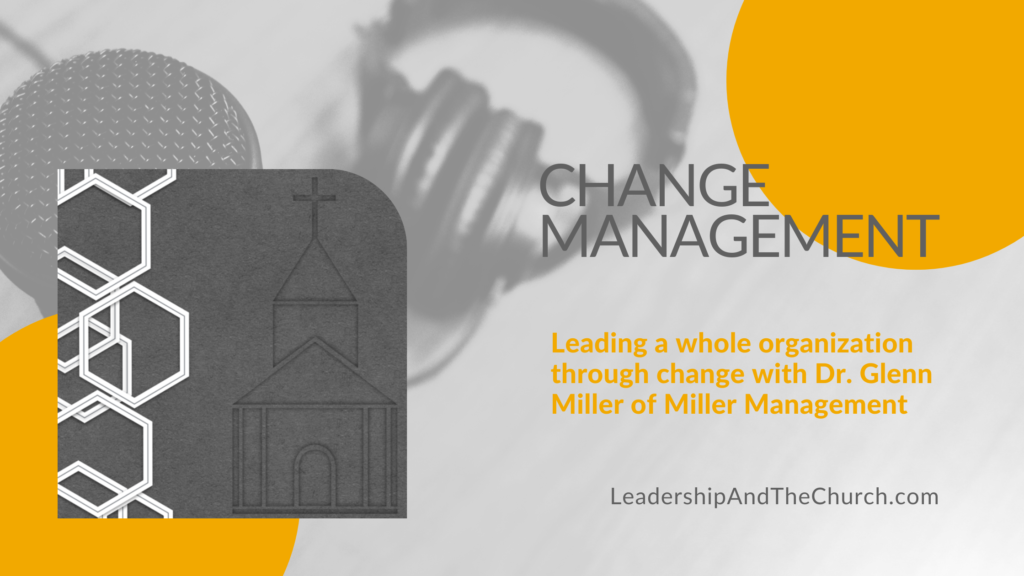Chris Miller, President of Miller Management, is the host of this week’s episode. He is joined by his colleage, Dr. Glenn Miller, CEO of Miller Management.

In this series, we will talk about why change is difficult and how to walk through change well as an organization. If we understanding what people go through, we can better lead them through the process.
The first episode in this series talked about the resistance to change, episode two was how to help individuals, last week we looked at how whole groups deal with change. For this final episode, we will discuss change at an organization level.
Formula for Organizational Change
Formula: when dissatisfaction drivers + vision + means + steps > resistentance to change, then you will achieve success. What do all those things look like?
Dissatisfaction drivers are those things that could cause the organization to reach it’s goals. Vision is defined as the future, in a tangible, believeable manner. Means is the financial, intellectual, and leadership necessary to accomplish your goals. Steps are the leadership skills needed. Resistance is anything. Success is when the whole organization meets their goal.
Now, let’s dive into the keys for each of those to create a successful outcome.
Keys to Success
Keys for dissatisfaction drivers: up first, communication is back again. It shouldn’t be a surprise to the company when leadership is going to make a change effort. Be proactive in researching. Provide perspectives on changing and not changing. Ask your people regularly what they are hearing and respond right away.
Keys for vision: creative redundancy on keeping the target clear. Validate the opinion and perspective from others, not just leadership. Find change advocates to talk with people. Invite and engage people to give their opinion.
Keys for means: you guessed it, communicate with your team. Assess what is needed for every department. Recommend a leader that can share why these changes need to made.
Keys for steps: establish a plan. (This doesn’t have to be done by the senior leader, you have advocates and other leadership people who should be doing this.) Have clearly stated goals, objectives, resources, timeframe, and how success is measured. An accountability and communications plan, along with what expected results will look like. Keep the troops focused, monthly, weekly, yearly; however long the plan is stated for. Lastly, you’ll never guess, communicate! Celebrate the short-term wins.
Organizational Change
Change is inevitable if you are going to be relevant long-term. Pain with change, is optional, if you are following the steps in this series. Change will need to be a part of your culture; it’s an ongoing lifestyle, not a one-off event.
Organizational change usually requires a culture and individual transition. Being able to lead through change is a critical component for a leader. Your staff and congregation as either a benchmark to succeed or an excuse to sink; it’s completely up to you.
Coming Up
As a leader, we need to see the value of change and lead other well through that change. Join us next month as we start a new series on communication.
Join the conversation, see behind the scenes, and learn more on our Instagram and X pages.
Special thanks to our guest, Dr. Glenn Miller, and our masters of all things Podcasting, Chris and Lauren Miller, for this final episode in our Change Management series.
